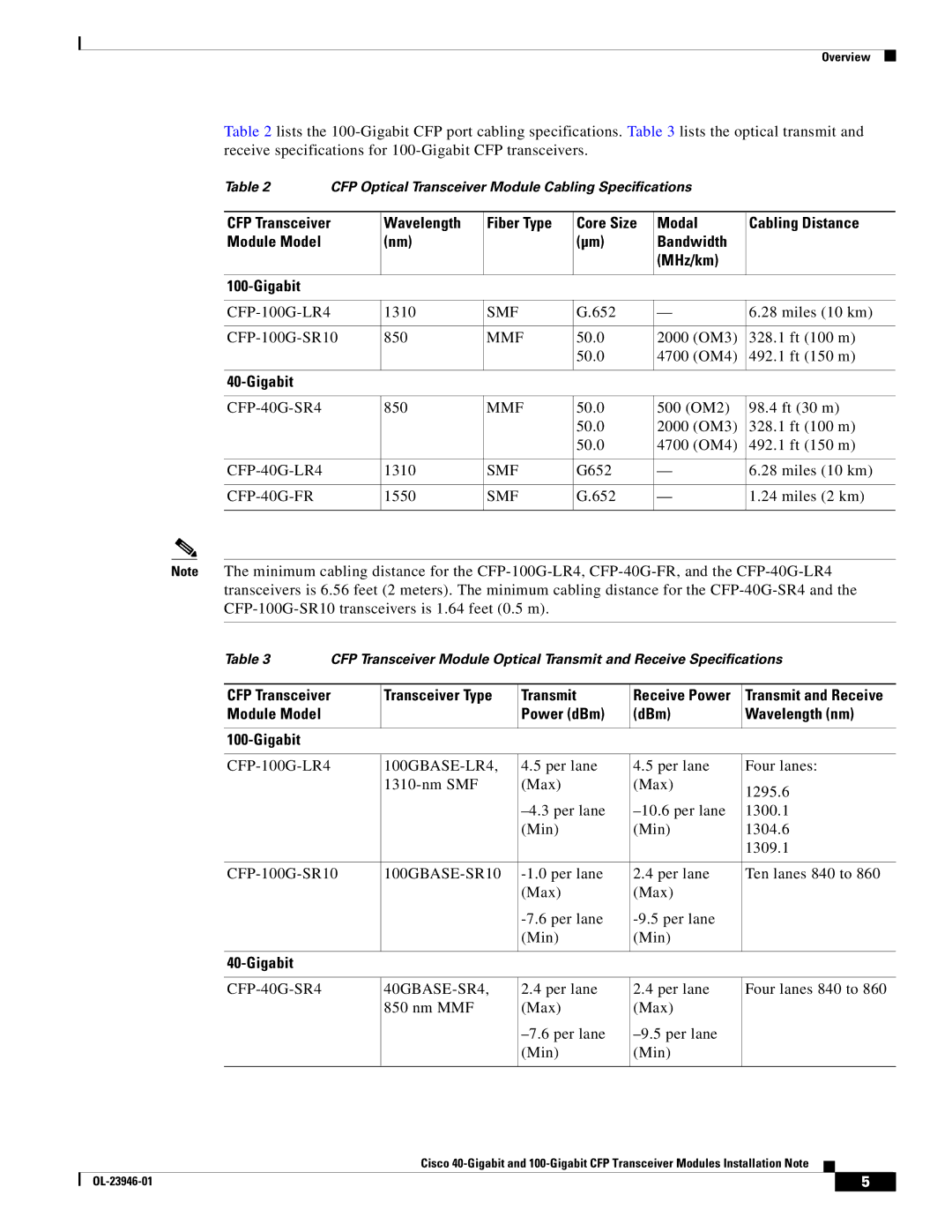CFP-40G-FR CFP-100G-SR10, CFP-40G-LR4, CFP-100G-LR4, CFP-40G-SR4, CVR-CPR-4SFP10G CFP-40G-FR specifications
Cisco Systems is renowned for its robust networking products, and within its vast portfolio, the CFP family of optical transceivers plays a critical role in advancing high-speed data communications. Among the well-regarded models are CFP-40G-LR4, CFP-100G-LR4, CFP-40G-SR4, CVR-CFP-4SFP10G, CVR-CPR-4SFP10G, and CFP-40G-FR. Each of these transceivers is engineered to support various applications and networking demands, ensuring flexibility and efficiency in data transmission.The CFP-40G-LR4 is designed for long-distance transmissions, utilizing a four-channel system to transfer data over a maximum distance of 10 kilometers. It leverages wavelength division multiplexing technology, allowing it to transmit data over a single optical fiber, which helps reduce infrastructure costs. The key feature of LR4 technology is its ability to maintain high performance across a wide range of environmental conditions.
In contrast, the CFP-100G-LR4 provides higher data rates suitable for long-reach applications. It operates over a similar distance of up to 10 kilometers but allows for 100 Gbps transmission. This capability is critical for data centers and enterprise networks where a large volume of data needs to be transmitted efficiently without compromising speed or quality.
The CFP-40G-SR4 is another important model designed for short-range applications, operating within a reach of up to 150 meters over multimode fiber. This transceiver is especially beneficial in high-density environments, such as data centers, where short-distance, high-volume connectivity is essential. Its four-channel design facilitates efficient data transfer in crowded settings.
The CVR-CFP-4SFP10G and CVR-CPR-4SFP10G are versatile adapters that enable the use of SFP+ modules in CFP ports, extending the functionality of existing network equipment. These adapters enhance scalability and provide operators with the flexibility to choose specific transceiver types based on particular networking needs.
Lastly, the CFP-40G-FR serves intermediate distance requirements, supporting data transfer over 2 kilometers using a similar technology as LR4 but optimized for applications where slightly less range is needed. This model finds its place in environments that require solid bandwidth performance without the necessity of long-distance capabilities.
In summary, the Cisco CFP series of optical transceivers exemplifies advanced technology in data communications, catering to various distances and bandwidth demands. With their unique features and capabilities, these models stand out in supporting modern networking infrastructures, enhancing overall performance and reliability.

